Whether you are building a physical datacenter or a virtual one based on hybrid or public cloud technology, you’ll have many issues to consider. In a physical build, you’ll need to think about security, physical access, power supply, resiliency, backup, and many other factors. Ideally, you will plan for and build an agile datacenter.
Datacenters are sophisticated facilities that operate in a diversity of environments. The professionals who manage them use automated tools to help them scale, allocate workloads, track chargebacks, run fast, and squeeze the most quality of service (QoS) they can out of their datacenter infrastructure.
What’s an agile datacenter?
What does agility mean when it comes to datacenters? The agile datacenter is built in small incremental steps with regular feedback from customers. It’s fast and easy to manage, responsive to new requirements and changing user demand. Workloads move easily and scale to meet changes in cyclical demand. The agile datacenter changes at the speed of business – it’s not locked into the usual provisioning delays of technology.
Sounds nice, doesn’t it. However, in the tightly controlled reality of the datacenter, these are not easy service levels to achieve.
Why is it difficult to build an agile datacenter?
Let’s consider how most datacenters work. A high percentage, by some estimates more than 75%, of workloads run virtualized in datacenters. By virtualized, we mean that the work is done on a Virtual Machine (VM). Running an OS via a VM under a shared Hypervisor or Supervisor is a great way to dynamically share compute resources and storage.
If the workload that runs in a VM is new or designed for a virtualized environment or a multi-tenant cloud infrastructure, chances are the VM will be efficient and well structured. But what about legacy workloads that are moved to a VM? Unfortunately, how legacy workloads are virtualized can significantly reduce the efficiency, flexibility, and agility of today’s datacenter. It turns out that cloned VMs are not the most efficient or easily scaled workloads.
Proliferating sprawl in legacy VMs
Much of the legacy workload running in today’s datacenters is simply a cloned image of a legacy server. After some reconfiguration effort, the clone replicates the OS and applications that were originally on physical hardware. Quite often, VMs are cloned without giving much thought about the unit of work that should be virtualized. The unit of work becomes the entire cloned machine.
Virtualizing entire machines:
- Proliferates differing legacy OS instances and patch levels.
- Replicates cluttered log files, broken and unnecessary applications, drivers, and utilities.
- Increases management costs and reduces datacenter agility.
- Makes it harder to change workloads and scale compute resources.
It leads to lots of inefficiency. Legacy VMs are inefficient because they are nearly impossible to change in terms of resource requirements. Some are resource intensive, noisy, and negatively impact neighboring VMs. Flash and VM aware storage can help individual VM performance. Ultimately, however, if you’re loading storage clutter, you’ll end up slowing down performance and over spending in your datacenter.
To be more agile, legacy VMs should be built on a standard greenfield OS image and run only core application stacks. Deviate from this and it becomes difficult to use modern DevOps tools for OS management, which results in loss of datacenter flexibility and efficiency. Cloning VMs means that the storage needs to be identical on the original machine and the VM clone. More than 50 percent of VM storage is often unnecessary sprawl and slows the loading and performance of VMs.
Focusing on the VM as the unit of work translates to replicating the clutter and chaos of an original physical machine on a new VM. Focusing on application stacks as the unit of work translates to enhanced datacenter agility, where workloads that people still need can be efficiently supported and prioritized in a dynamic way.
How do I build agility into my datacenter?
Start by figuring out what you need before you move it, then be smart about how you move it. The agile approach helps you think ahead, which leads to prioritizing and sizing the movement of your most important business applications first. This improves efficiency and reduces the costs of running a datacenter.
Building agile VMs lets you use all the sophisticated datacenter management and DevOps tools to squeeze the best QoS out of your VMs, while eliminating the need to manage and load legacy clutter.
1 Virtualize and run only what you need
Get to agility by monitoring and analyzing your production servers. Instead of cloning entire machine images, use smart, automated application monitoring to dynamically discover application usage, server and workload capacity requirements, application dependencies, and migration readiness. Intelligent monitoring tells you which applications are still used, establishes priorities, reveals application and storage clutter, and helps you plan and size target server requirements.
Virtualize only the applications you need from legacy servers to a VM instance. The modern greenfield OS is lower cost, preconfigured, supported, and hosted. Virtualizing only business-critical applications saves significant time and money on bandwidth, processing, ongoing storage, and management. No need to move an OS or apps no one uses, and no need to pay for clutter on virtual servers.
The VirtaMove solution moves a virtualized application via smart, encrypted communication to a sandbox container on the target VM. The container encapsulates the application and its dependencies and separates it from the underlying OS. The container gives you a secure sandbox on the target VM to do final acceptance testing and cut-over from the production server. Once the application has passed acceptance testing, you can remove the sandbox and get a fresh install of the application on the greenfield OS, which completes the virtual migration. Technical details on how we do this is available in AZ whitepapers.
2 Consolidate
Intelligently moving legacy applications (not entire machines) allows you to consolidate multiple workloads to a single VM or split application stacks across multiple VMs. Both these approaches will make your datacenter easier to manage and scale, and therefore more agile.
3 Up-level your apps
Instead of copying an outdated OS version and its patches to VMs, use virtual application movement to up-level OS versions. Being agile means moving applications from legacy OS environments like WS2003 or WS2008 to modern, easier to manage greenfield OS versions on WS2012 and WS2016. Uplifting virtual applications to a modern, hosted OS instance can be done for less than one-quarter of the network bandwidth, storage, and processing required for full legacy VM cloning. Up-leveling also closes security exposures inherent in legacy OS instances.
4 Use advanced cloud tools
A modern greenfield OS with a standard release level lets you use advanced datacenter and cloud tools to monitor and manage application usage and OS instances. You avoid the ongoing nightmare of patching and maintaining many legacy OS instances. Better OS management and fresh legacy application installs means more agile operations and savings with:
- Optimized storage
- Improved performance
- Paying for business-critical resources only
5 Reduce reconfiguration costs
Virtual application movement significantly reduces your reconfiguration burden. You can reconfigure applications on-the-fly and remap IP addresses and other critical application setups. Plus, greenfield OS instances come preconfigured with the drivers and other custom configurations they need. Reducing your reliance on reconfiguration in turn reduces setup problems, saves time, and reduces system cut-over delays, letting you move and scale to meet business demands faster.
If you’d like to learn more about how virtual application movement can help you build an agile datacenter by enhancing speed and improving QoS, give us a call, register for a free demo, or send us an e-mail. We’re always delighted to show you what we can do.
Submitted by
Valerie is a seasoned content writer and editor in the tech domain.

